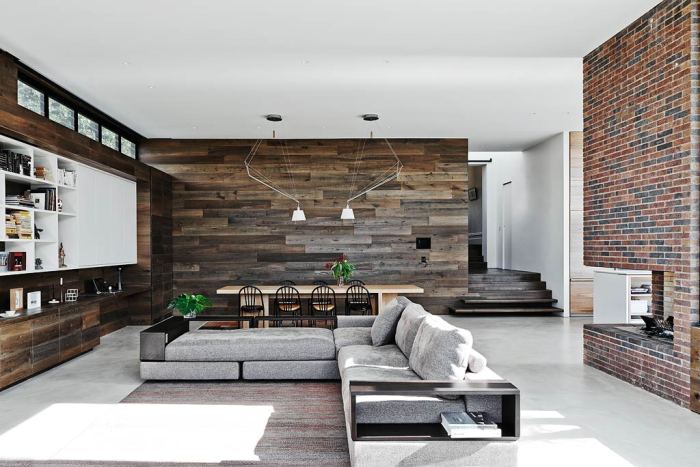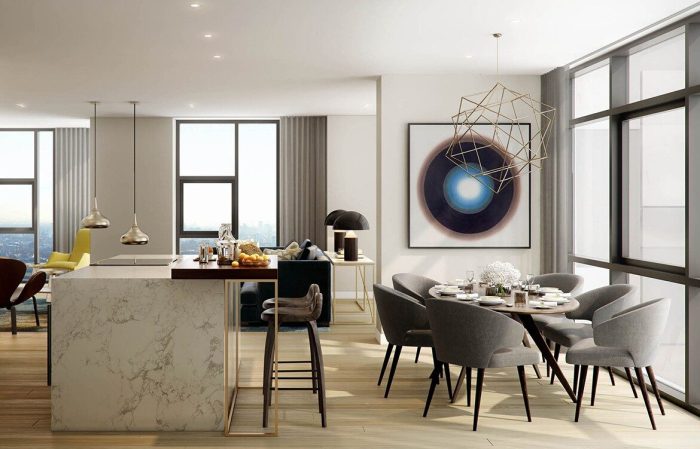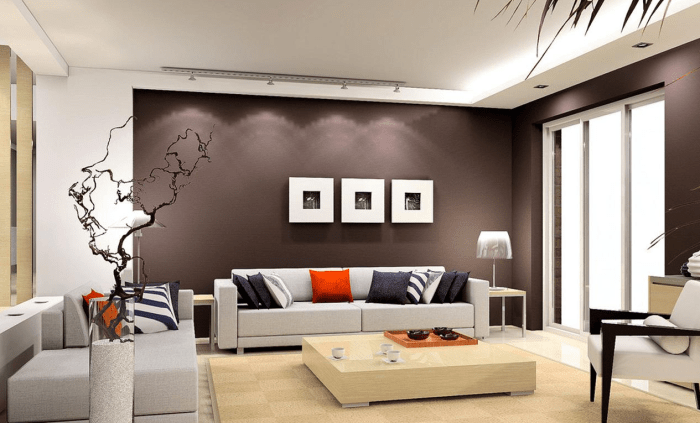Exploring the Impact of Interiors

Delving into the world of interiors, we uncover how the design of a space can significantly influence its ambiance. From color schemes to textures, each element plays a crucial role in shaping a room's character and feel. Let's journey through the art of interior design and discover its secrets.
Importance of Interiors in a Space
Interiors play a crucial role in shaping the overall atmosphere and mood of a room. The design, layout, and elements used within an interior space can significantly impact how people feel and interact within that environment.
Role of Color Schemes
Color schemes are essential in setting the tone of an interior space. Different colors can evoke various emotions and create different vibes within a room. For example, cool tones like blues and greens can promote a sense of calm and relaxation, while warmer tones like reds and oranges can create a more vibrant and energetic atmosphere.
Use of Textures
Textures are another important element that can enhance the design of interiors. Incorporating a variety of textures, such as smooth surfaces, rough finishes, and soft fabrics, can add depth and visual interest to a space. For instance, combining a plush rug with a sleek leather sofa can create a dynamic and inviting living room setting.
Elements of Interior Design
Interior design encompasses various elements that work together to create a cohesive and aesthetically pleasing space. Key elements include furniture, lighting, and accessories.
Furniture
Furniture plays a crucial role in interior design as it not only provides functionality but also adds style and character to a space. The choice of furniture can set the tone for the overall design scheme, whether it be modern, traditional, or eclectic.
It is essential to consider the scale, proportion, and placement of furniture to ensure a harmonious and balanced look.
Lighting
Lighting is another crucial element in interior design as it can significantly impact the ambiance and functionality of a space. Proper lighting can highlight architectural features, create a focal point, and enhance the mood of a room. It is essential to consider natural light, artificial lighting fixtures, and the use of different lighting sources to create layers of light for a well-lit and inviting space.
Accessories
Accessories are the finishing touches that can tie a room together and add personality and visual interest. These can include decorative items such as artwork, rugs, throw pillows, and plants. Accessories help to inject color, texture, and pattern into a space, enhancing its overall appeal.
Spatial Planning
Spatial planning is a fundamental aspect of interior design that involves arranging furniture and elements within a space to optimize functionality and flow. It is crucial to consider the layout, traffic patterns, and the relationship between various elements to create a space that is both visually appealing and practical.
Use of Patterns
Patterns can add depth, visual interest, and personality to an interior space. Whether through textiles, wallpapers, or decorative accents, the use of patterns can create a focal point, add texture, and create a sense of cohesion in a room. It is essential to balance the scale and intensity of patterns to avoid overwhelming the space and to create a harmonious design scheme.
Trends in Interior Design
Interior design trends are constantly evolving to reflect the changing preferences and lifestyles of people. Two major trends that have gained popularity in recent years are minimalism and maximalism.
Minimalism
Minimalism focuses on simplicity, clean lines, and a clutter-free environment. It often involves neutral colors, natural materials, and a sense of openness. To incorporate minimalism into interior design, one can opt for sleek furniture, decluttering spaces, and maximizing natural light.
Maximalism
On the other end of the spectrum, maximalism embraces bold colors, patterns, and textures. It's about creating a visually rich and eclectic space filled with personality. To achieve maximalism in interior design, one can mix and match patterns, experiment with vibrant hues, and showcase unique decor pieces.
Sustainable Materials
With a growing focus on sustainability, interior designers are increasingly incorporating eco-friendly materials into their projects. This includes using recycled or upcycled materials, such as reclaimed wood or repurposed furniture. Sustainable interior design not only reduces environmental impact but also promotes a healthier living environment
Influence of Technology
Technology plays a significant role in shaping modern interior design concepts. From smart home devices to virtual reality tools, technology has revolutionized the way spaces are designed and experienced. Designers now have access to advanced software for 3D modeling, lighting control systems, and home automation, allowing them to create innovative and efficient designs.
Interior Design Styles

When it comes to interior design, there are several popular styles that people often choose to implement in their spaces. Some of the most well-known styles include Scandinavian, Industrial, and Bohemian. Each style has its own unique characteristics and aesthetic appeal.
Scandinavian Style
The Scandinavian style is known for its simplicity, functionality, and minimalistic approach. It often features neutral colors, natural materials, and plenty of natural light. Furniture tends to be sleek and modern, with clean lines and a focus on comfort.
Industrial Style
Industrial design takes inspiration from old factories and industrial spaces. It often incorporates raw materials like wood, metal, and exposed brick. The color palette is typically muted and earthy, with a focus on creating a rugged and utilitarian look.
Bohemian Style
Bohemian design is eclectic, colorful, and full of personality. It embraces a mix of patterns, textures, and styles from around the world. Layers of textiles, plants, and unique decor pieces are common in Bohemian interiors, creating a cozy and inviting atmosphere.
Cultural Influence on Interior Design
Interior design aesthetics are heavily influenced by different cultures around the world. For example, Japanese design often focuses on simplicity, harmony, and the use of natural materials, while Moroccan design features vibrant colors, intricate patterns, and ornate details.
Blending Traditional and Contemporary Styles

The concept of blending traditional and contemporary styles in interiors has become increasingly popular. This approach involves mixing elements from different time periods and design movements to create a unique and personalized space. For example, pairing a vintage rug with modern furniture or incorporating traditional architectural details in a contemporary setting can add depth and character to a room.
Closure

As we conclude our exploration of interiors, it's evident that the choices made in design can transform a space into a unique and inviting haven. By understanding the importance of elements like furniture, lighting, and patterns, one can truly craft a space that reflects personal style and functionality.
Dive into the world of interiors and unleash your creativity.
FAQ Resource
How do colors impact the atmosphere of a room?
Colors can evoke different emotions and moods in a space. Warm tones like red or orange can create a cozy atmosphere, while cool tones like blue or green can bring a sense of calmness.
What role does spatial planning play in interior design?
Spatial planning is essential for optimizing the layout and flow of a space. It involves strategically placing furniture and accessories to ensure functionality and aesthetic appeal.
How can sustainable materials be incorporated into interior design?
Sustainable materials like bamboo, reclaimed wood, or recycled glass can be used to create eco-friendly and stylish interiors. These materials reduce environmental impact and promote a healthier living space.




